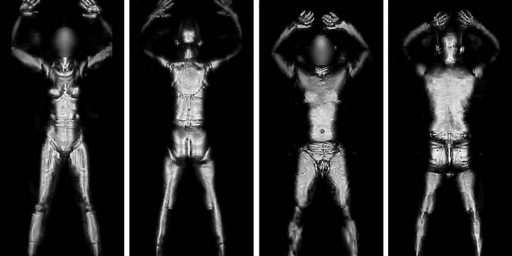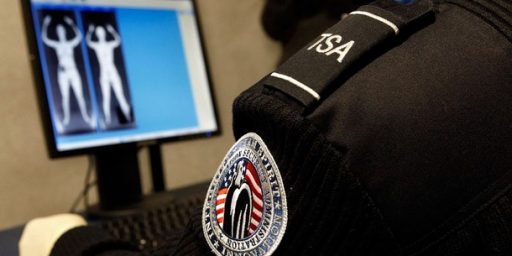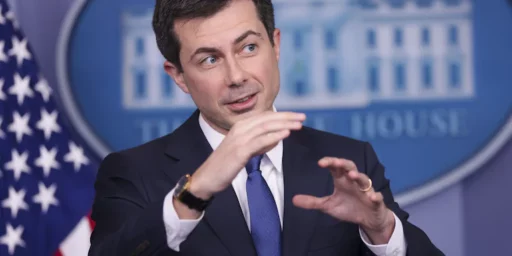TSA May Allow Knives, Icepicks, Bows and Arrows
After four years of overreaction to the 9/11 attacks, the government is consider lifting the ban on razorblades, pocket knifes, and several other items that might be used as weapons.
TSA May Loosen Ban on Razorblades, Knives (AP)
The federal agency in charge of aviation security is considering major changes in how it screens airline passengers, including proposals that an official said would lift the ban on carrying razorblades and small knives as well as limit patdown searches. The Transportation Security Administration will meet later this month to discuss the plan, which is designed to reduce checkpoint hassles for the nation’s 2 million passengers. It comes after TSA’s new head, Edmund S. “Kip” Hawley, called for a broad review in hopes of making airline screening more passenger-friendly.
An initial set of staff recommendations drafted Aug. 5 also proposes that passengers no longer have to routinely remove their shoes during security checks. Instead, only passengers who set off metal detectors, are flagged by a computer screening system or look “reasonably suspicious” would be asked to do so, a TSA official said Saturday.
Any of the changes proposed by the staff, which also would allow scissors, ice picks and bows and arrows on flights, would require Hawley’s approval, this official said, requesting anonymity because there has been no final decision. “The process is designed to stimulate creative thinking and challenge conventional beliefs,” said Mark Hatfield, TSA’s spokesman. “In the end, it will allow us to work smarter and better as we secure America’s transportation system.”
The Aug. 5 memo recommends reducing patdowns by giving screeners the discretion not to search those wearing tight-fitting clothes. It also suggests exempting several categories of passengers from screening, including federal judges, members of Congress, Cabinet members, state governors, high-ranking military officers and those with high-level security clearances.
These changes make sense, although the inclusion of ice picks and bows and arrows on the list may raise some eyebrows. With reinforced cockpit doors, though, it’s hard to conceive of anyone taking control of an aircraft again with a mere blade. Plus, after 9/11, the passengers themselves would likely dispatch the would-be terrorists.
The idea that someone was going to hijack a plane with a safety razor and nail clippers was always silly. A bow and arrow, on the other hand, is a pretty potent weapon–although one rather difficult to deploy in tight quarters.
It is also high time a “screened” list was created. That someone has been deemed sufficiently trustworthy to receive top secret information–but not to ride public transportation–was always baffling to me.






If Edmund S. “Kip” Hawley has any respect for the dead, our 9/11 heros, and any concern at all for the living he won’t remove the ban. Also, what Mark Hatfield said, “the process is designed to stimulate creative thinking and challenge conventional beliefs” is misleading and wrong. The “process” (screening passengers for deadly weapons) is designed to protect the passengers, crew, and bistanders from deadly attacks and hijackings. I consider the weapons ban and the strict screenings to be very “passenger-friendly”. If I am ever to be a passenger on an airplane I want as much security and protection as possible. Why should long lines be a concern of anyone when peoples lives are at stake?